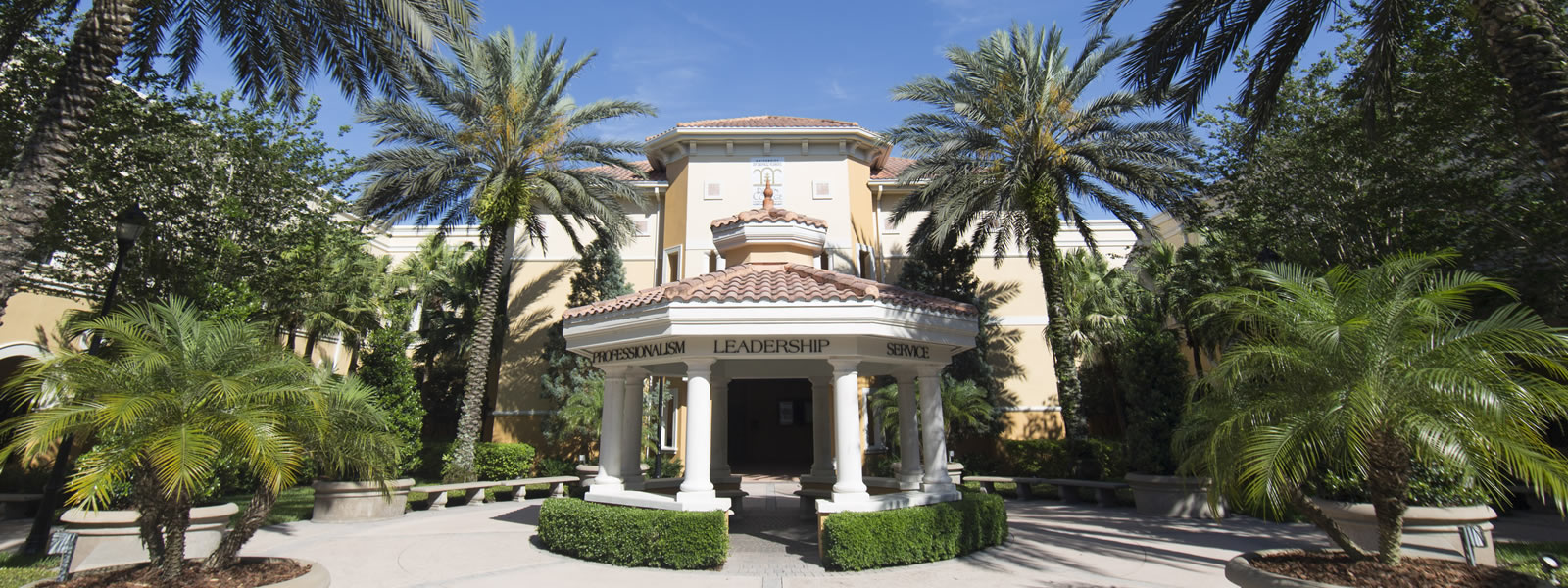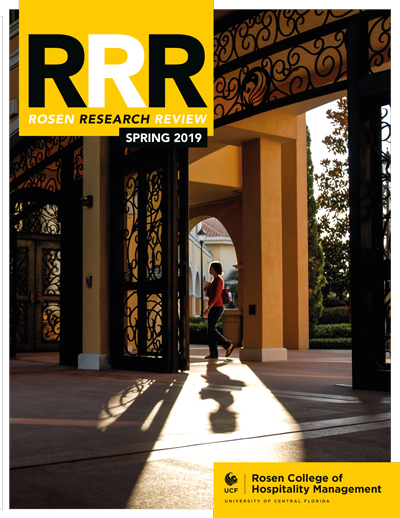Rosen Research Review: Sweet Home Alabama
 How we choose our leisure destinations is a critical insight required by cities and regions that rely on tourism to fund their economy. In this study of Alabama as a destination, Dr. Jeeyeon (Jeannie) Hahm of Rosen College of Hospitality Management, University of Central Florida, and Dr. Kimberly Severt of Department of Human Nutrition and Hospitality Management, The University of Alabama, consider how destination marketing must focus on factors important to tourists to encourage them to visit, and then ensure they are not disappointed.
How we choose our leisure destinations is a critical insight required by cities and regions that rely on tourism to fund their economy. In this study of Alabama as a destination, Dr. Jeeyeon (Jeannie) Hahm of Rosen College of Hospitality Management, University of Central Florida, and Dr. Kimberly Severt of Department of Human Nutrition and Hospitality Management, The University of Alabama, consider how destination marketing must focus on factors important to tourists to encourage them to visit, and then ensure they are not disappointed.
When people choose where to go for their leisure breaks, whether a major vacation or just a short visit, a main limitation is the budget they have available. Even if we ignore the pull of global tourist options, within the US there are 50 states all enthusiastic to take those vacation dollars. For Alabama, that’s 49 other states competing to grab their share, each offering an attractive choice of natural wonders (such as the Grand Canyon, Miami Beach or Niagara Falls), cultural and historical treasures (Nashville, Cape Kennedy and Hollywood for example), and of course, the lure of the iconic ‘man-made’ US theme parks (think Disneyland/Disney World, Universal and Sea World). How does a state such as Alabama, where tourism is its largest industry, assess its performance and manage the process that brings those essential tourists?
In 2017, Alabama attracted 26.6 million visitors, spending $14.3 billion (an increase from 2016 of 7.1%). That accounted for a minimum of 186,906 direct and indirect jobs for the Alabama population. But even with that level of economic activity, Alabama is not even in the top 25 of the states and territories being selected as the destination of choice across the whole of the US. People who live in the state and those who have previously visited, know that it has plenty of natural resources, heritage and man-made attractions to offer. It has a wide variety of local foods, great outdoor activities, beautiful landscape and the renowned Southern hospitality. So why the low ranking in terms of visits?
Photo: Sean Pavone/Shutterstock.com
FAMILIARITY AND PERCEIVED IMAGE
The assumptions made seem to be that there is, quite simply, a low level of familiarity (that is, too few people know what the state has to offer), and/or that the state has a negative image. However, previous research has been exploratory and is largely outdated. Destination marketing organizations (DMOs) need much better insight and to act on that intelligence. A low level of familiarity could be a result of insufficient and ineffective marketing messages; but if the problem is a negative image, then what has caused this? Looking to the future; how can attitudes and perceptions of Alabama be converted to a measurable positive intent to visit? Ultimately, how can Alabama ensure that, when tourists consider their destination choices, Alabama is one of those candidate destinations? The purpose of this study by Hahm and Severt is to investigate both the cognitive (thinking and knowledge) and the affective (feelings and emotions) perceptions of Alabama held by those who have visited the state and those who haven’t.
ECONOMIC AND ACADEMIC BENEFITS
Obviously, a change in marketing strategy to improve awareness of Alabama’s offerings and create positive visit intentions should have a direct economic benefit for the state. But in addition, the research would have a benefit for academia in providing insight into the relationships between destination familiarity, destination image and visit intentions. Previous documented research had focused on people who had actually visited Alabama; this study would seek to understand, in addition, the perceptions of those who have had no direct personal experience.
DESTINATION IMAGE
The first challenge was to define the concept of destination image. In fact, this has been a topic of considerable research for many decades. It is defined as the sum of beliefs, ideas, and impressions that a person or a group of persons have about a destination (Crompton, 1979; Gallarza et al., 2002). However, most of the research has been quantitative or structured in nature, attempting generalization and frequency.
“It is a complex and subjective concept that is comprised of both cognitive (perceptions of individual attributes, such as quality of hotels, friendliness of people, weather) and affective components (holistic impressions, such as atmosphere or mood of the destination)” according to Echtner and Ritchie (1993). The authors, therefore, adopted the approach of Echtner and Ritchie (1993) in using both quantitative and qualitative methods. Following an extensive literature review, Hahm and Severt constructed a questionnaire that was distributed using the online survey platform, Qualtrics. This sought to determine each respondent’s awareness of Alabama and its particular attractions. There were 340 respondents with data collected over five days.
The survey opened with two open-ended questions to capture the range of perceptions associated with Alabama. The second section of the survey used a previously constructed set of 19 image attributes (Baloglu and McCleary, 1999; Beerli and Martin, 2004; and Echtner and Ritchie, 1993) and applied them to awareness of Alabama. It then explored how that awareness was expressed in the degree of intention to visit Alabama. The 19 image attributes mentioned above were then rated for importance by the respondent (as a general assessment of a potential destination, not specifically Alabama). Finally, demographic data was collected, together with confirmation of whether the respondent had ever visited Alabama. For those who hadn’t, there was an additional question regarding intention or willingness to visit the state and, if none, an opportunity to give reasons.
IMPORTANCE AND PERFORMANCE
Importance-performance analysis (IPA) is a tool sometimes used in destination image research, but it had not previously been used on data related to Alabama. In this study, the authors applied the tool to compare perceptions of performance (i.e. from both prior visitors and potential visitors) with the destination attributes expressly deemed important. These responses were plotted against axis of importance and performance to create a four-box grid. Each box defined a particular perception and labelled the destination position as a: Concentrate Here; b: Keep up the good work; c: Low priority; and d: Possible overkill. The IPA allowed comparison between those who responded based on prior visit(s) to Alabama, and those who responded based purely on theoretical familiarity and perceptions. In fact, of the 340 total respondents, only 120 (35.3%) had previously visited the state; whereas 220 (64.7%) had not. Interestingly, those who had visited demonstrated a much higher rating for the factors included in destination image.
CONCLUSIONS
Possibly the most powerful insight from the study was how little familiarity or perceptions of Alabama existed with those who had not visited the state. This sends a clear message to both the state authorities and to destination marketing organizations that there is a major opportunity to use marketing tools to increase awareness and familiarity of what Alabama has to offer. This could, at least, increase the frequency with which Alabama is included in the destination selection process. In general, respondents perceived the state to be pleasant, relaxing and family orientated; not necessarily a powerful incentive to commit to visiting and, potentially, even acting to dissuade tourists seeking something a little more dynamic and exciting.
PRACTICAL IMPLICATIONS
This is the first academic study exploring Alabama as a tourist destination. Providing a unique and holistic evaluation of the destination’s position, it has strong implications for Alabama’s destination marketing organizations. Perhaps the most immediate challenge for the state and DMOs, is to deal with some issues where important attributes were rated as poorly performing by people who had direct experience. One of the most highly stressed importance factors was cleanliness and hygiene, but Alabama scored poorly on performance. The authors suggest that the state may need to improve performance through stricter regulation and monitoring. Another factor that scored badly on performance was the existence of cultural attractions. Given that Alabama has a host of attractions, including the US Space and Rocket Center often billed as Earth’s largest space museum, there is obviously much more that could be done to promote what Alabama has to offer as a destination.
 Dr. Jeeyeon (Jeannie) Hahm is an Assistant Professor at the Rosen College of Hospitality Management at University of Central Florida (UCF). She holds a Ph.D. and a M.S. from UCF and a B.A. from Seoul Women’s University. Her research areas include destination image, film-induced tourism, and consumer behavior in tourism and events.
Dr. Jeeyeon (Jeannie) Hahm is an Assistant Professor at the Rosen College of Hospitality Management at University of Central Florida (UCF). She holds a Ph.D. and a M.S. from UCF and a B.A. from Seoul Women’s University. Her research areas include destination image, film-induced tourism, and consumer behavior in tourism and events.
E: Jeeyeon.Hahm@ucf.edu T: +1 (407) 903-8158
W: https://hospitality.ucf.edu/person/jeeyeon-hahm/
W: www.linkedin.com/in/jeeyeon-jeannie-hahm-31595b7a/
 Dr. Kimberly S. Severt received a Ph.D. from Oklahoma State University in 2007. She is an Associate Professor and Director of the Hospitality Management program at The University of Alabama. Her research areas include incentive travel, meetings and events, consumer behavior, technology efficiencies and application systems.
Dr. Kimberly S. Severt received a Ph.D. from Oklahoma State University in 2007. She is an Associate Professor and Director of the Hospitality Management program at The University of Alabama. Her research areas include incentive travel, meetings and events, consumer behavior, technology efficiencies and application systems.
E: ksevert@ches.ua.edu T: +1 (205) 348-8169
W: http://ksevert.people.ua.edu/
Researchers in Focus
Research Objective
This research focused on the importance of destination marketing with particular reference to Alabama.
References
The authors owe special thanks to the Mary A. Crenshaw Endowed Research Fund at The University of Alabama that made this study possible.
References
Key paper
Jeeyeon (Jeannie) Hahm, Kimberly Severt, (2018) “Importance of destination marketing on image and familiarity”, Journal of Hospitality and Tourism Insights, Vol 1, Issue 1, pp.37-53, https://doi.org/10.1108/JHTI- 10-2017-0002
Other sources
Baloglu, S. and McCleary, K.W. (1999), “A model of destination image formation”, Annals of Tourism Research, Vol. 26 No. 4, pp. 868-897.
Beerli, A. and Martín, J. (2004), “Factors influencing destination image”, Annals of Tourism Research, Vol. 31 No. 3, pp. 657-681
Crompton, J.L. (1979), “An assessment of the image of Mexico as a vacation destination and the influence of geographical location upon that image” Journal of Travel Research, Vol 17, No 4 pp.18-23
Echtner, C.M. and Ritchie, B.J.R. (1993), “The measurement of destination image: an empirical assessment”, Journal of Travel Research, Vol. 31 No. 4, pp. 3-13.
Gallarza, M.G., Saura, I.G. and Garcia, H.C. (2002), “Destination image: towards a conceptual framework”, Annals of Tourism Research, Vol. 29 No. 1, pp. 56-78
News article related to this manuscript
https://www.al.com/news/mobile/2017/12/boycott_threats_to_positive_pr.html
Personal Response
Did the research identify what had encouraged those respondents who had previously visited Alabama to make that initial commitment?
No. We did not ask the purpose of visit for those that had previously been to Alabama. Perhaps this information could have given us an insight into why they would travel back in the future but not necessarily recommend Alabama as a travel destination to others. For example, if their initial visit was to see family or friends, they might go back for that reason. This aspect is recognized as a limitation of our study.

